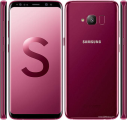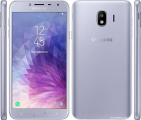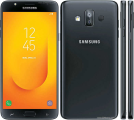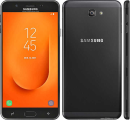Samsung Galaxy A7 Prices
Important Note.
- All prices are in Pakistani Rupee (PKR)
- Prices may vary at stores and our effort will be to provide you with the updated prices.
- The latest price of Samsung Galaxy A7 was obtained on 17 مئی, 2019. The prices at the original stores had been updated on the respective mentioned dates.
- Find out WhatMobile price has dropped in Pakistan by selecting Notify Price Drop button
- Find out WhatMobile has better specifications by clicking Add To Compare Button find out what Mobile has better reviews by visiting our reviews section
- Find out WhatMobile is cheaper on which retailer by clicking Compare prices from retailers button
Search Terms
- Samsung Galaxy A7
Specifications
| GENERAL | |
| 2G Network | GSM 850 / 900 / 1800 / 1900 - SIM 1 & SIM 2 (optional) |
|---|---|
| 3G Network | HSDPA 850 / 900 / 1900 / 2100 |
| 4G Network | LTE |
| Sim | Optional Dual SIM (dual stand-by) |
| Announced | 03/01/2015 |
| Status | Coming soon. Exp. release 2015, Q1 |
| BODY | |
| Dimensions | 151 x 76.2 x 6.3 mm (5.94 x 3.00 x 0.25 in) |
| Weight | 141 g (4.97 oz) |
| DISPLAY | |
| Display Size | 5.5 inches (~72.5% screen-to-body ratio) |
| MultiTouch | Yes |
| SOUND | |
| AlertTypes | Vibration; MP3, WAV ringtones |
| LoudSpeaker | Yes |
| 3.5mm jack | Yes |
| MEMORY | |
| CardSlot | microSD, up to 64 GB |
| Internal | 16 GB, 2 GB RAM |
| DATA | |
| GPRS | Yes |
| EDGE | Yes |
| Speed | HSPA 42.2/5.76 Mbps, LTE Cat4 150/50 Mbps |
| WLAN | Wi-Fi 802.11 a/b/g/n, dual-band, hotspot |
| Blue Tooth | v4.0, A2DP, EDR, LE |
| NFC | Yes (LTE model only) |
| USB | microUSB v2.0 |
| CAMERA | |
| Camera Primary | 13 MP, 4128 x 3096 pixels, autofocus, LED flash |
| Camera Features | Geo-tagging, touch focus, face detection, panorama, HDR |
| CameraVideo | 1080p@30fps |
| CameraSecondary | 5 MP |
| FEATURES | |
| Processor Cores | Octa-Core |
| OS | Android OS, v4.4.x (KitKat) |
| CPU | Quad-core 1.5 GHz Cortex-A53 & quad-core 1.0 GHz Cortex-A53 - LTE/3G Dual SIM model Quad-core 1.8 Cortex-A15 GHz & quad-core 1.3 Cortex-A7 GHz - LTE model |
| Sensors | Accelerometer, proximity, compass |
| Messaging | SMS(threaded view), MMS, Email, Push Mail, IM |
| Browser | HTML5 |
| Radio | TBC |
| GPS | Yes, with A-GPS, GLONASS |
| Java | Yes, via Java MIDP emulator |
| Colors | Pearl White, Midnight Black, Champagne Gold |
| Others | - ANT+ support - Active noise cancellation with dedicated mic - MP4/WMV/H.264 player - MP3/WAV/WMA/eAAC+/FLAC player - Photo/video editor - Document viewer |
| BATTERY | |
| Battery | Non-removable Li-Ion 2600 mAh battery |
| TalkTime | Up to 17 h (3G) |
| MISC | |
| SARUS | 1.05 W/kg (head) 0.80 W/kg (body) |
| SAREU | 0.41 W/kg (head) 0.55 W/kg (body) |
Reviews
Price: �619 (16GB); �699 (64GB); �789 (128GB)
Rating: 0

Samsung has announced the Galaxy A7, which is a new addition to the 'A' range and is bigger than the A3 and A5. It has the same 5.5in screen as the iPhone 6 Plus, making it a cheaper rival if you're after a big-screened smartphone.
Bear in mind that our comparison is based on what we know so far about the Galaxy A7 from Samsung, plus our full, in-depth review of the iPhone 6 Plus.
See also: iPhone 6 vs iPhone 6 Plus
iPhone 6 Plus vs Samsung Galaxy A7: price and availability
The 16GB iPhone 6 Plus costs £619, but you can have 64GB of storage for £699. If that's not enough, you can double it again for £789.
There's no confirmed price for the Galaxy A7, but Samsung has said it will be "competitive". A rumoured figure for Europe is 509 euros, which could turn into a sub-£400 price.
iPhone 6 Plus vs Samsung Galaxy A7: design and screen
One of the most striking things about the A7 is how stylish it is. It's also very iPhone-like, although not when placed next to the iPhone 6 Plus. It's more like an enlarged iPhone 5.

From the back, these two phablets are nothing like each other, though. In fact, it's hard to tell the Galaxy A7 from any other recent Samsung smartphone, with a square camera, and a smaller square LED and speaker flanking it.
We've yet to hold a Galaxy A7, but the first thing you're sure to notice is the 6.3mm thickness: that's almost 1mm thinner than the iPhone 6 Plus. Even the iPhone 6, which feels amazingly thin measures 6.9mm.
The Galaxy A7 is a few millimetres shorter and narrower than the iPhone 6 Plus, too, which means it won't feel quite as unwieldy. It's a good 30 grams lighter: yet another benefit (this could mean shorter battery life, but we'll have to test that out when we get hold of an A7 to review).
Even though the screens have similar op-paper specifications for resolution and pixel density, the Galaxy A7 uses fundamentally different technology. While the iPhone sticks with an IPS LCD panel, the A7 sticks with the current Samsung tradition of using AMOLED, Super AMOLED to be precise.
With Super AMOLED, the touchscreen layer is integrated into the display itself. This makes it thinner, and more power efficient. The screen also reflects less light, and therefore looks better outdoors.
Many people dislike the overly saturated colours which Super AMOLED produces, but there are still plenty of fans. If you want more natural colours, the iPhone 6 Plus' screen will be preferable.
And as far as IPS screens go, the iPhone has one of the best around. It has a contrast ratio of 1,400:1 which is considerably higher than the iPhone 5S, and it means blacks look really deep.
The iPhone's screen gently curves at the edges to meet the curved aluminium sides, which looks and feels great. You also get Apple's premium build quality, of course.
Both phones come in three different colours.
iPhone 6 Plus vs Samsung Galaxy A7: performance, storage and connectivity
The Galaxy A7 will be offered in single- and dual-SIM versions, but if only the single-SIM variant is sold in the UK, we'll be stuck with the 32-bit Exynos 5430 chip that was used in the Galaxy Alpha.
The dual-SIM version is the one to have, since it gets the new 64-bit Snapdragon 615 octacore processor from Qualcomm.
We can't say for sure until we've been able to run any benchmarks, but if the UK gets the 32-bit Galaxy A7, the iPhone 6 Plus should beat it in just about every speed test.
As you can see in the table, connectivity is very similar, but the iPhone 6 Plus has 802.11ac Wi-Fi instead of 802.11n. However, the iPhone's NFC is limited to Apple Pay which isn't yet available in the UK.
The two smartphones also differ on storage with the Galaxy A7 supporting microSD cards for expanding the 16GB of internal storage. With the iPhone 6 Plus, you'll have to pay up front if you want 64 or 128GB of storage rather than a paltry 16GB (which is more like 13GB of actual usable space).
Samsung Galaxy A7
Apple iPhone 6 Plus
Processor
Exynos 5430 octocore 32-bit
Apple A8 64-bit M8 co-processor
Graphics processor
Mali T628 MP6
PowerVR GX6450
Operating System
Android 4.4 KitKat
iOS 8
Screen
5.5in full-HD (1920x1080, 401ppi) sAMOLED
5.5in full-HD (1920x1080, 401ppi)
Storage
16GB
16/64/128GB
RAM
2GB
1GB
Back camera
13Mp with LED flash, 1080p video recording
8Mp with OIS and dual-tone LED flash. 1080p, 240fps video recording
Front camera
5Mp
1.2Mp
Cellular
4G/LTE/HSPA
4G/LTE/HSPA
SIM
Not stated
nano
Wi-Fi
802.11a/b/g/n (2.4/5GHz dual band)
802.11a/b/g/n/ac (2.4/5GHz dual band)
Bluetooth
4.0
4.1
NFC
Yes
Yes
GPS
A-GPS
A-GPS
Video output
Not stated
HDMI via adaptor, or AirPlay
Battery
2600mAh non-removable
mAh non-removable
Colours
Pearl White, Midnight Black, Champagne Gold
Silver, Gold, Space Grey
Dimensions
151 x 76.2 x 6.3 mm
158.1 x 77.8 x 7.1mm
Weight
141g
172g
iPhone 6 Plus vs Samsung Galaxy A7: cameras
The Samsung has a 13Mp rear camera versus the iPhone's 8Mp. Both have optical stabilisation. However, as every iPhone owner knows, Apple can make good use of fewer pixels to deliver fantastic quality photos and video.
The Galaxy A7 might capture more detail than the iPhone, but it remains to be seen whether the lens is up to the job. In terms of video, both shoot 1080p footage at 30fps. The iPhone 6 Plus can also ramp up the frame rate to 240fps for brilliant slow-motion clips.
Around the front, Galaxy A7 owners should expect better selfies as they'll have 5Mp at their disposal - considerably more than the 1.2Mp camera on the iPhone 6 Plus.
iPhone 6 Plus vs Samsung Galaxy A7: software
Oddly, Samsung says the A7 will ship with KitKat 4.4, not 5.0 Lollipop. That's a shame as Lollipop is better looking and has more features: there's no word on when there will be an update.
Samsung will add its Touchwiz overlay and extra apps to the A7, so if you're already a Samsung smartphone owner, you'll be right at home.
The iPhone 6 Plus comes with iOS 8, reviewed here, which will get an update to iOS 9 later this year - that's virtually guaranteed.
Buying Advice
It's too early to give a definitive verdict between these two smartphones. We'll update this article when the Galaxy A7 launches.Write Your Own Review
My Recent Reviews
- Be first to post review for this product.
comments powered by Disqus








-i5At.jpg)



-32-GB.jpg)
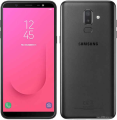
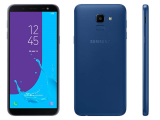
.jpg)
